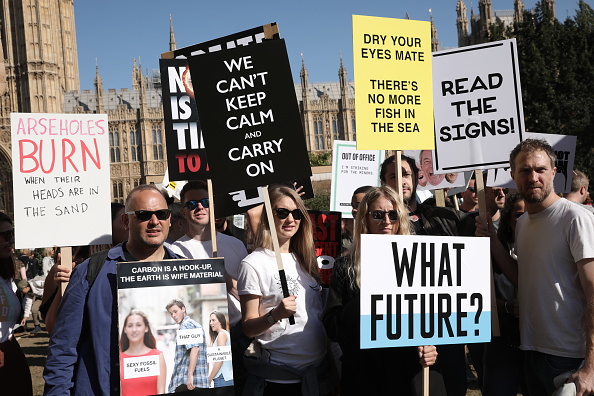No business is an island in the fight against climate change

Last Friday, adults joined forces with students to inspire a call to action on the Earth’s climate and ecological emergencies.
More than a thousand Amazon employees planned a walkout, and we saw the Trade Union Congress urge their members to support climate strikers.
Regardless of what you think of people taking time off work to strike against climate change, they have flung our planetary emergency right onto centre stage.
However, the opportunity for real change will be lost if businesses don’t move away from grand purpose statements towards activism, because only then can we drive systemic change that has a lasting impact.
Our Responsible Business Tracker findings showed that 86 per cent of companies have stated their purpose, but as little as 17 per cent have a plan to make sure that it’s practised at every level of the organisation.
This isn’t good enough, and we won’t see the change we need unless everyone acknowledges their role in preventing climate change.
Greta Thunberg woke us up to the fact that our house is on fire, but how many leaders have acknowledged that this means their business is also going up in flames?
We have a deadline of 10 years to at least halve carbon emissions, which may feel like a long time, but in reality, it is just two or three business planning cycles. The challenge can seem insurmountable, but by taking steps to move from purpose to activism, we have a real chance to meet that 10-year deadline.
Business activism does not mean having to stand on a soap box and shout for change. It means using a company’s scale and reach to solve societal and environmental problems.
As a start, businesses can be supportive of employees wanting to take part in strikes by allowing them to take a day’s annual leave if possible, giving them the opportunity to learn from their experience.
You can join 150 organisations in signing the Business in the Community’s Waste to Wealth Commitment, which is a way of companies collectively working to eliminate avoidable waste by 2030.
For many offices, there are lots of small changes that can be made to the way resources are used to make these spaces more sustainable. It’s also worth considering how your staff can operate in workspaces differently in order to eliminate waste.
All chief executives should identify the risks that more extreme weather could have on the continuity of your business, while in turn figuring out where you can make it more resilient.
Another good tactic is to incentivise more sustainable behaviour among your employees, and even reward them for coming up with fresh ideas.
And finally, cut your carbon emissions by minimising your use of fossil fuel and finding ways to purchase or generate renewable energy.
Businesses must do more and put aside competition with each other to work collectively and tackle this problem together.
And if they can’t, they must have an honest conversation with their employees, customers, shareholders, regulators, and the general public in order to answer the most difficult question of all: If not, why not?